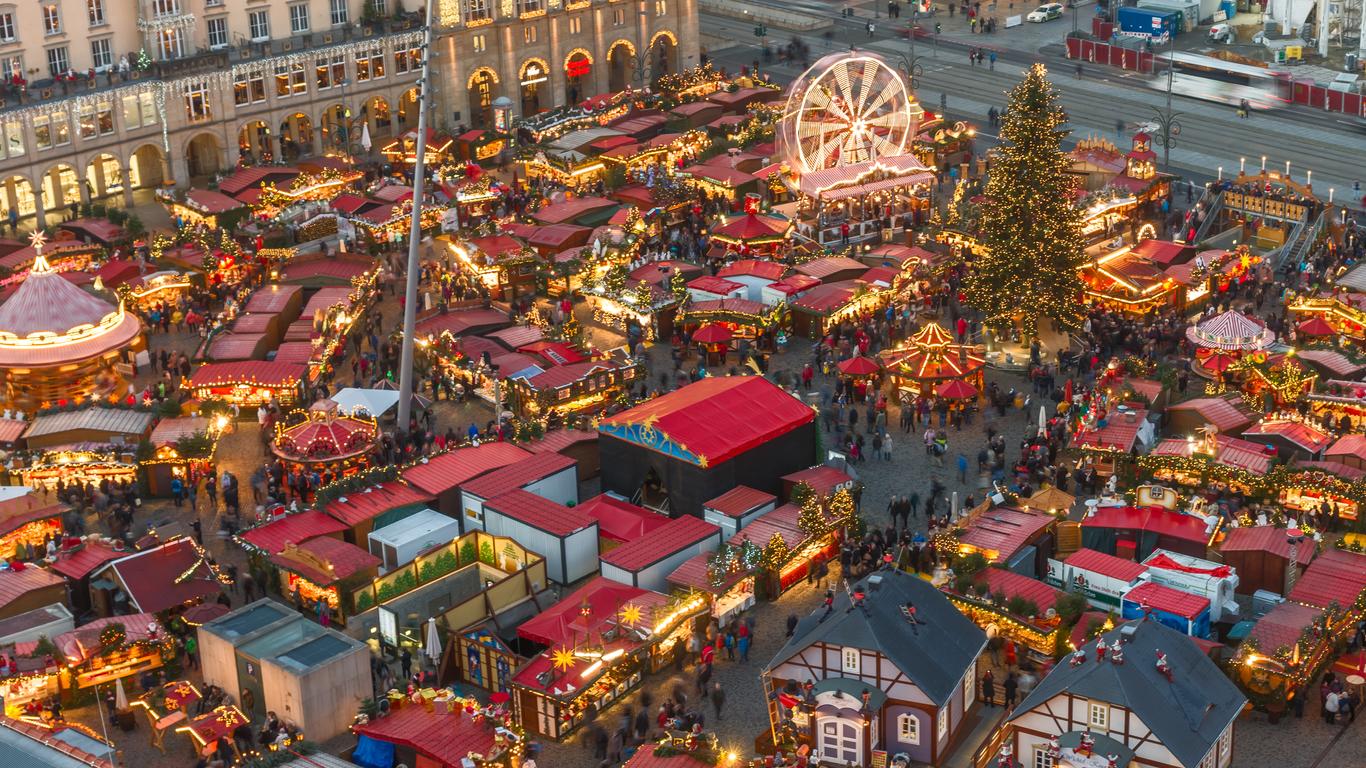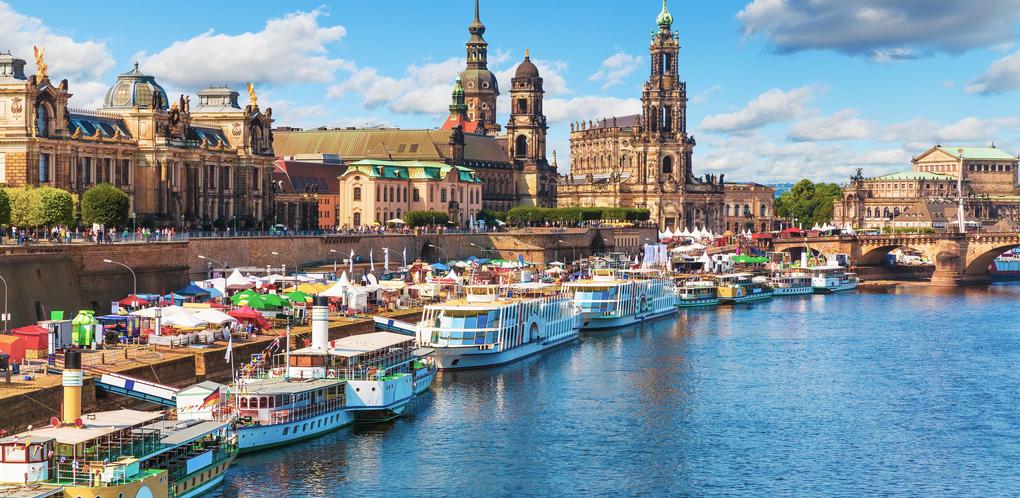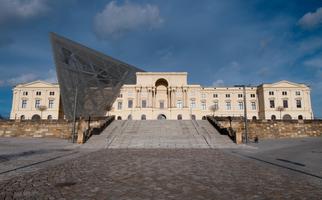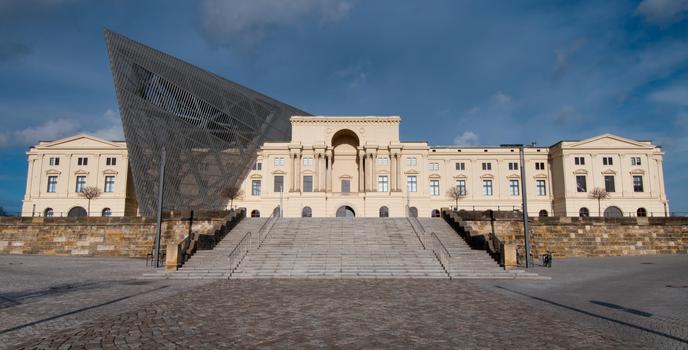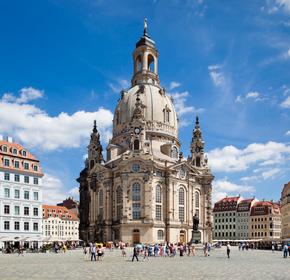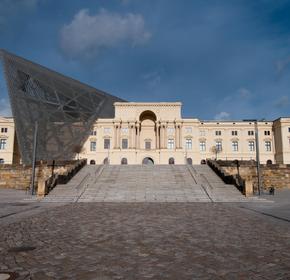1. Theaterplatz: A Public Square Fit for a King
This large public "theater" square is located near the Elbe River and features an impressive bronze equestrian statue of King John or Johann, who was the ruler of Saxony from 1854 to 1973. Many of the city's landmarks are located along the square, including the Zwinger Palace, or Semperbau, which includes an art gallery and two fountains dating from the 1800s in front of the entrance. The Hofkirche, a Baroque church, is also located along the square, along with the Italienisches Dörfchen, and the neoclassical Altstädter Wache, or Old Town Watchtower.
2. Dresdner Frauenkirche: The Church of Our Lady
Bombed to rubble during the Second World War and then meticulously reconstructed in the 1990s, the Frauenkirche is an impressive example of ornate Baroque architecture. Its large dome, constructed of stone, has become an icon of the city. Visitors can tour the intricately decorated interior of the church, which includes an exhibit on the restoration process. The public may also attend services, which are held twice daily.
3. Grosser Garten: Baroque Splendor in the Heart of Dresden
The Grosser Garten covers just over one square mile in Dresden's center and delights visitors with its pristine landscaped grounds, impressive fountains, and other sights. Originally established in 1676, it was converted to a public garden in 1814. The Sommerpalais, a small but charming palace, is located at the center of the park and boasts impressive sandstone sculptures and other early Baroque features. The park is also the home of the Dresden Zoo, with over 300 species of animals, located in the southwest corner. The exotic Dresden Botanical Garden, featuring 10,000 different types of plants, is situated in the northwest corner of the park. The Parkeisenbahn, or Dresden Park Railway, a miniature railway service, travels throughout the grounds seasonally from April to October. Tours of the garden and palace are available to the public.
4. Militärhistorisches Museum der Bundeswehr: A Military History Museum
One of the most important military history museums in Germany, the Bundeswehr Military History Museum is located in what was once a military arsenal. Exhibits examine both German military technology as well as the human cost of war, and include objects such as uniforms, handguns, and other military gear. There is also an extensive collection devoted to art that examines war and its consequences, including over 1,000 paintings along with hundreds of sculptures, drawings, and prints. Historic artifacts include the ship's bell from SMS Schleswig-Holstein, which launched World War II by firing at Polish targets in September 1939.
5. Brühlsche Terrasse: The Balcony of Europe
Extending along and above the river Elbe, this Renaissance-era terrace offers striking views along the river, and of many of the city's iconic structures such as the nearby Hofkirche. Brühl's Terrace itself consists of a number of historic architectural structures, including the Academy of Fine Arts, various sculptures and monuments, along a wide pedestrian street, with benches overlooking the river view on the other side. A number of restaurants and bars line the streets nearby.
